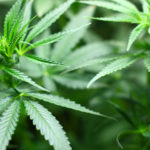
30 Jan Synthetic Marijuana vs. Medical Marijuana
Table of Content
Over the course of the last decade, marijuana has intermittently dominated the national news cycle. There has been an increased call for the federal government to reduce and repeal regulations on medical and recreational marijuana use. To the contrary, there has been an increased warning as to the health risks and social impact of marijuana use, as well as to the impact of a newer class of cannabinoid labeled as “synthetic marijuana.” Here we will compare the usage, risks and benefits of both medical marijuana and synthetic marijuana substitutes.
What is Synthetic Marijuana?
Synthetic marijuana is actually not marijuana at all, but a synthetic marijuana substitute. Over the last decade or so, a number of different chemical concoctions have been developed with the aim of replicating the intoxicating effects of tetrahydracannabinol (THC) — the primary psychoactive compound found in cannabis. These chemicals are often developed and produced en masse in foreign countries and imported to the U.S. for distribution and use. Upon arrival, they are typically sprayed or dripped over organic material with physical qualities close in appearance to natural marijuana, thus infusing it with the capacity to produce a “high.” They are then sold in local “head-shops” and online stores as “spice.” While spice is the most common name associated with synthetic cannabis, it is also marketed under various other monikers including:
- K2
- Herbal Incense
- Skunk
- Moon Rocks
As with many drugs of abuse, these names serve to support the illusion that the substances they describe are relatively safe, when they are in fact far from it. The effects they produce can be quite potent, often leading to discomfort and in certain cases, death.
What Is a Synthetic Marijuana “High” Like?
The more innocuous physical and psychotropic effects of synthetic cannabinoids are quite similar to those of natural marijuana:
❖ Euphoria
❖ Feeling of relaxation or well-being
❖ Minor pain relief
❖ Drowsiness
These symptoms are the ones that are typically desired by those who use cannabinoids recreationally. While these particular effects are similar in quality to those of marijuana, the effects produced by synthetic cannabinoids are often found to be much more potent.
Why Do People Use Synthetic Marijuana?
There is any number of reasons that someone might choose to use synthetic marijuana instead of natural marijuana. Some people simply do not have access to natural marijuana so they choose to chase the same high by using spice instead. Historically, the most basic and understandable reason was that spice was legal to obtain and consume while marijuana was not. Though, as health concerns have come to light in regard to the use of spice, the federal government has begun to crack down by making its sale, distribution, possession, and consumption illegal in most parts of the U.S.
At this point in time, the most common reason for using spice is that it is not detectable with the most commonly used drug tests. This is of particular concern to those who hold positions in government-regulated services like the armed forces, who are subject to regular drug testing. Developing the proper test to detect the specific chemical structure of spice is very difficult, as there is no set recipe. The recipe varies from producer to producer. Indeed, when one particular chemical signature is identified and banned by regulatory agencies, it is common for producers to come up with a new compound in order to skirt regulation and continue production and sales.
Is Spice Stronger Than Marijuana?
The potency of each batch of spice is dependent on a number of factors. As we have mentioned there are many different chemical mixtures that are sold under the same name. Some of these chemicals are more potent than others and may produce effects between 4 and 100 times as strong as regular marijuana. However, the potency of the chemicals themselves is not the only factor that determines overall potency. The method of preparation may also have a strong influence on the level of effect produced. As we discussed earlier, these liquid chemicals are commonly sprayed or drizzled over organic material to give them the appearance of naturally-occurring cannabis.
There is no mandated regulation or standardization to this process so there is a lot of room for variance in the potency of the final product. Adding to this issue is the fact that many producers of spice conduct relatively small, private operations without great experience or supervision. The result can be a very uneven distribution of the psychoactive chemicals amongst the organic material, producing what are known as “hot spots”. It is pretty much impossible to identify an unusually potent batch of spice, and consuming some can lead to great discomfort or overdose.
What Are the Negative Symptoms of Spice?
In addition to the desired effects of spice consumption, there can also be a number of uncomfortable and dangerous side effects. Some of them are similar to the more uncomfortable effects reported as a result of natural marijuana use. However, given the potential for higher potency found in synthetic marijuana, these effects can have been found to increase dramatically. They include:
- Anxiety
- Paranoia
- Loss of Consciousness
- Psychosis
Anxiety and paranoia are commonly reported symptoms of both natural and synthetic marijuana intoxication. While they can be quite uncomfortable, and in some cases long-lasting (hours to days), they are not generally harmful to your health. Loss of consciousness, on the other hand, can pose a real risk to your physical wellbeing if you are in a situation where there is a hazard that requires you to be alert such as driving or swimming. Psychosis is the symptom that gets sensationalized the most. There are many reports of spice users enduring a psychotic break. During such episodes, their behavior may become aggressive or uncoordinated. Some accounts describe “zombie-like” behavior where people experience decreased motor and verbal function, causing them to shuffle or stumble and produce incoherent speech. Some report no recollection of experiencing such episodes.
Is it Possible to Overdose On Spice?
In a sense, yes, it is absolutely possible to overdose on synthetic marijuana and the results can be extreme, including death. While acute overdose is not common, there have been thousands of cases of complications due to chronic use. Hundreds of these cases have resulted in fatality over the last decade both in the U.S. and around the world.
What Happens When You Overdose on Spice?
The most common and therefore dangerous complication of chronic spice consumption is kidney failure. Your kidneys serve to purge your body of toxins and excess fluid. When they fail, the body may retain fluid and the toxins dissolved within, which can cause other organs to fail and result in death. In some cases, this kidney damage can be reversed over time and the patient’s life can be saved. However, recovery of kidney function is often reported to take months, during which time a patient would undergo daily or weekly dialysis treatment at a hospital with a cost of around $30,000 a month. As you can see, spice overdose is a very real and dangerous possibility. At best, it will cost you months of discomfort and recovery time along with hundreds of thousands of dollars in medical bills. At worst, it can cost you your life.
Can You Overdose on Natural Marijuana?
Safety of use may be the single most important differentiating factor between synthetic marijuana substitutes and natural marijuana. There is a metric used by pharmaceutical and government regulatory agencies to measure the safety of drugs that is known as the therapeutic index (TI). The therapeutic index is measured as a ratio between the minimum effective dose—the minimum dosage necessary to produce psychotropic effects in the average adult human—and the minimum lethal dose—the minimum dose necessary to induce death in an average adult human. The higher the ratio, the safer the drug. Drugs that are commonly thought of as “dangerous” for their ability to cause overdose will have a relatively low therapeutic index. Heroin, for instance, has a TI score of around 5, one of the lowest scores of any recreational drug. Marijuana, on the other hand, has a TI score of over 1,000+, making it all but impossible to overdose on.
Health Risks Associated with Marijuana
This is not to say that there are no health risks to consider in regard to marijuana. Marijuana is proven to impair cognitive functioning and reduce reaction time during periods of intoxication, which can be particularly dangerous in driving and in other potentially hazardous situations. There is also evidence of potential lung damage along with colloquial evidence of long-term memory impairment. However, as with many psychoactive substances before it, marijuana has begun to be heralded for its therapeutic properties in spite of its drawbacks.
Medical Marijuana
Marijuana is becoming more widely studied and employed in medical treatment around the world. In the United States, medical marijuana is currently legal by prescription in 29 states and the District of Columbia. Proponents have long celebrated cannabis for its perceived therapeutic properties, claiming that THC has the ability to do things like:
❖ Reduce anxiety
❖ Alleviate pain
❖ Reduce inflammation
❖ Relieve symptoms of PTSD
❖ Increase creativity
Historically, support of these claims was limited mostly to anecdotal evidence, as the federal government had classified marijuana as a Schedule 1 narcotic, claiming that it has no therapeutic or medical uses and a high risk of abuse. However, times have begun to change and somewhat dramatically.
Medical Marijuana Research
While the DEA has maintained marijuana’s Schedule 1 classification, the federal government has dramatically increased its support for research by removing many restrictions and expanding a federally funded and maintained cultivation center at the University of Mississippi in Oxford. With increasing frequency, true medical studies have been conducted in an attempt to understand the full range of therapeutic effects, best usage, and potential side effects of medical cannabis. These studies have produced a wealth of new information and practices that are now being made available for medical and psychological treatment.
Uses For Medical Marijuana
Today, the uses of medical marijuana are many and varied. Studies have produced evidence in support of the anecdotal benefits described earlier. Medical marijuana has been shown to be an effective analgesic (pain-reliever) and anxiolytic (anxiety-reducer) as well as relieving troublesome symptoms of a wide range of diseases including:
❖ Acne Atherosclerosis Crohn’s Glaucoma
❖ ADD/ ADHD Arthritis Depression Heart Disease
❖ Addiction Asthma Diabetes Huntington’s
❖ AIDS Autism Endocrine Disorders IBS
❖ ALS Bipolar Epilepsy/Seizures Kidney Disease
❖ Anorexia Cancer Fibromyalgia Liver Disease
❖ Metabolic Syndrome Neurodegeneration Prion Disease Sleep Disorders
❖ Migraine Chronic Pain PTSD Spinal Injury
❖ Mood Disorders Obesity Rheumatism Stress
❖ Motion Sickness OCD Schizophrenia Stroke and TBI
❖ Multiple Sclerosis Osteoporosis Sickle Cell
❖ Nausea Parkinson’s Skin Conditions
Is Medical Marijuana Safe?
As previously mentioned, there are potentially harmful side effects associated with the use of medical cannabis. The therapeutic index is extremely high and there is no clinical evidence of physical dependence as a result of medical marijuana use. However, it is important to keep in mind that one of the mechanisms involved in the psychological aspect of dependence that is present with the use of marijuana; specifically, the neural pathway that is known as the “reward center” of the brain is activated. As evidenced above, there is an exceeding number of benefits to careful application of medical marijuana. However, in the interest of protecting your physical wellbeing, it is always recommended that you consult with your physician before undertaking any marijuana detox.
Is Synthetic Marijuana a Good Substitute for Medical Marijuana?
In short, absolutely not. As we have discussed, synthetic marijuana substitutes are not marijuana at all. Because of this, they lack many of the therapeutic properties while producing additional health hazards that are not incurred through the use of medical marijuana. At no time should synthetic marijuana substitutes be used in an attempt to achieve the therapeutic effects of medical marijuana. Before attempting any type of drug treatment, be sure to consult with a licensed physician and make yourself aware of the potential risks and benefits to your health, so that you may make the best possible decision for you.
Sources:
“What’s the Difference Between Synthetic Cannabinoids and Marijuana?” Drug Policy Alliance. 15 Mar. 2019. http://www.drugpolicy.org/whats-difference-between-synthetic-cannabinoids-and-marijuana
“Medicinal, Recreational and Synthetic Cannabis Use.” Alcohol and Drug Foundation. 22 Feb. 2018. 14 Mar. 2019. https://adf.org.au/insights/various-cannabis-use/
“Synthetic Cannabinoids (K2/Spice).” NIDA. Feb. 2018. 15 Mar. 2019. https://www.drugabuse.gov/publications/drugfacts/synthetic-cannabinoids-k2spice






No Comments